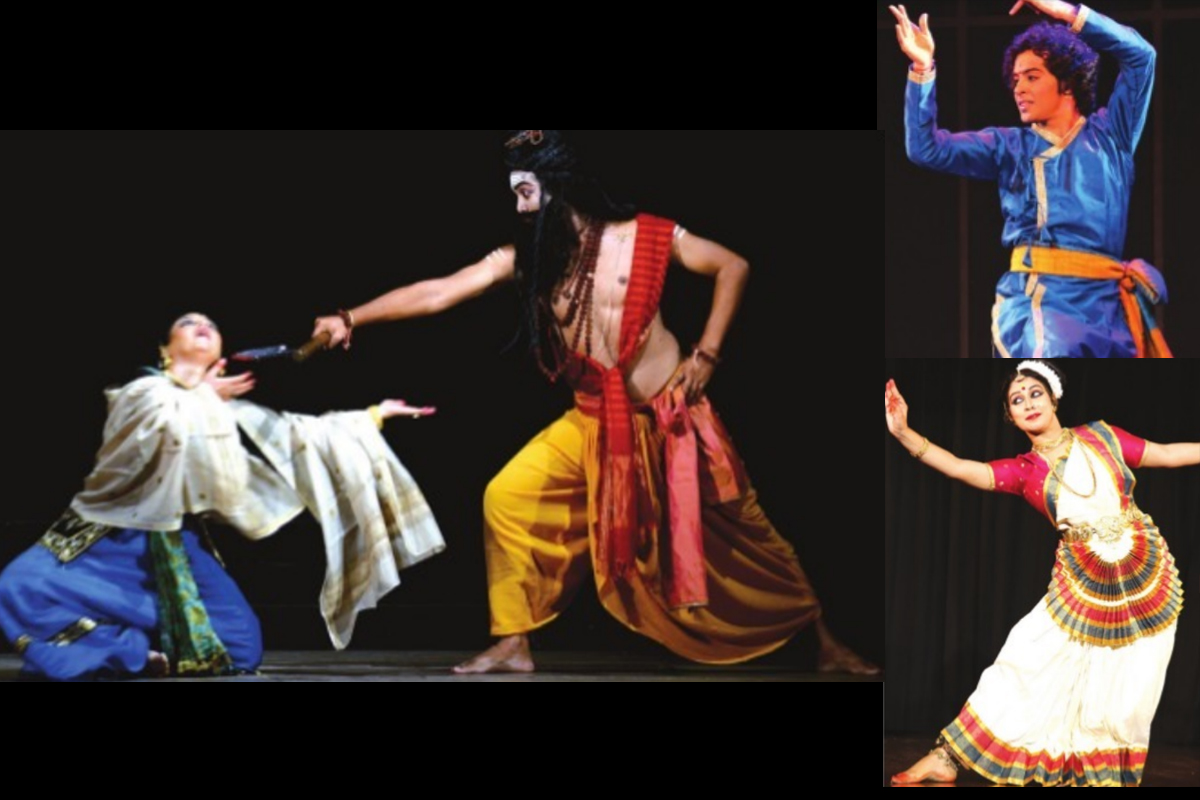The search for intellectuals
It’s true that in the past few years, with the absolute corporatisation of the media and the advent of the media-savvy politician, ‘non-pliant’ editors and media professionals have been replaced by pliant ones.
Music and dance from Assam mesmerised the Capitals dance lovers as also IIC Double Bill Concert.

PHOTO: Statesman News Service
Pratishruti Foundation, established by Prateeksha Suresh and the Assam People Welfare Association, jointly presented the Story of Brahmaputra, Borgeet and Sattriya dance, at the Satya Sai Auditorium this past Sunday. Trained in Sattriya dance style under Guru Raseshwara Saikia and in Bharatanatyam at Kalakshetra, Prateeksha has been researching and spreading awareness about the classical music and dance traditions of Assam like the Borgeet and Sattriya dance style, for more than three decades.
Borgeet, the raga-based devotional songs composed in the 15th and 16th century by Mahapurush Srimanta Shankardev and his disciple Madhav Dev, came as the auspicious opening, when Guru Shri Krishna Goswamy and group presented a Borgeet written and composed by Shrimanto Shankardev in raga Ohir, set to a combination of Talas that kept changing according to the Rasa-Bhava of the Sahitya. Guru Shri Krishna Goswamy, supported by Yashodhara Goswamy and Lopamudra Neog, was accompanied on the melodious Flute by Prasanna Barua and on Khol, by Jatindra Mahanta.
The Sattriya dance “Moira Chali”, literally meaning the gait of peacock, came next. Performed by dancers Ritkrishna Bharali, Gaurav Baruati, Bhargav Hazarika, Sampurna Saikia and Olympika Saikia as peacocks, the group choreography by Prateeksha had various movements and formations with perfect synchronisation. The recorded music was composed in the Hindustani Megh Malhar, a monsoon raga.
Advertisement
Another Borgeet in raga Asowari, set to a combination of Talas, presented by Guru Shri Krishna Goswami and his gifted group, was followed by Chor Dhora, a solo Sattriya performance by Prateeksha, based on Makhan-chori leela, from Krishna Karnamrita, interspersed with Vachika-Abhinaya.
The evening concluded with Story of Brahmaputra, a dance-drama based on the mythological storyline from Kalika-Purana, depicting how the sacred Brahma-Kundtook the form of the enormous Brahmaputra and descended on earth. Conceived and choreographed by Prateeksha, the complicated mythological story was quite thoroughly dealt with. As far the authenticity of music from Assam goes, Borgeetpresentation was more convincing.
Double Bill Concert at IIC
The India International Centre (IIC) presented Mohiniyattam and Kathak solo performances by Mythili Maratt and Deepak Aurora respectively, for their Double Bill Concert. Trained under Kalamandalam Kshemavathy, Sadanam Balakrishnan and Gopika Varma, Mythili has authored books on Mohiniyattam and founded Moham, an institute for Mohiniyattam, in Hyderabad
The India International Centre (IIC) presented Mohiniyattam and Kathak solo performances by Mythili Maratt and Deepak Aurora respectively, for their Double Bill Concert. Trained under Kalamandalam Kshemavathy, Sadanam Balakrishnan and Gopika Varma, Mythili has authored books on Mohiniyattam and founded Moham, an institute for Mohiniyattam, in Hyderabad.
Opening her Mohiniyattam recital with Mukhachalam, composed by Sri Kavalam Narayana Panikker in Ragamalika-Tala Malikawith syllables referring to Ganapathy in the Sopana tradition, she presented Yamunashtakam by Vallabhacharya, invoking river Yamuna with natural vigour and grace
The Telugu Padam, attributed to Sharangapani, in Sahana raagam came next. Here, the Nayika, being separated from her beloved Krishna, pleads with him not to forget her. “Even though miles separate, the sun and the lotus have a strong bond between them.”
The popular Ayyappa Keerthanamin Madhyamavati, choreographed by Gopika Varma, took Mythili’s Mohiniyattam performance to the concluding Balamurali Brindavani Thillana. The lyricism of the dance form was maintained by the graceful dancer despite the musical flourishes of the composition. Deepak Aurora, a brilliant disciple of Guru Rajendra Gangani, opened his Kathak performance with Ganesh Paran and Ganesh Vandanafollowed by a Misra Jati crisp footwork to establish the Jaipur Gharana credentials, before he proceeded to the traditional Nrittain Teentalawith Thaat, Aamad, Tode-Tukde and Paran. The Ladiin Sooltala, remarkably maintained the challenging time-cycle of 10 beats. The concluding Bhajan/Guru Vandana made for an intense Abhinaya climax, but Deepak further continued with Tatkar(footwork), Gata-Nikas, Gata-Bhavaand Sawal-Jawab, as if he was not sure of his already proven artistry!
A review by Manjari Sinha.
Advertisement